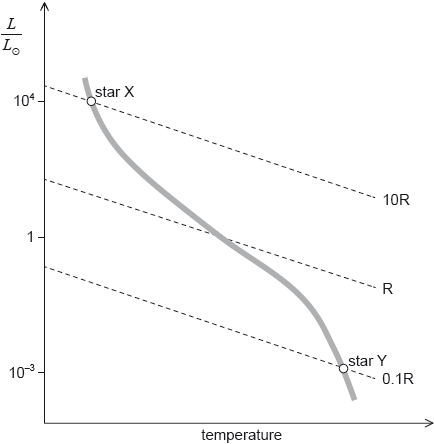| Date | May 2017 | Marks available | 3 | Reference code | 17M.3.SL.TZ2.12 |
| Level | Standard level | Paper | Paper 3 | Time zone | 2 |
| Command term | Describe | Question number | 12 | Adapted from | N/A |
Question
A particular emission line in a distant galaxy shows a redshift z = 0.084.
The Hubble constant is H0 = 68 km s–1 Mpc–1.
Describe what is meant by the Big Bang model of the universe.
State two features of the cosmic microwave background (CMB) radiation which are consistent with the Big Bang model.
Determine the distance to the galaxy in Mpc.
Describe how type Ia supernovae could be used to measure the distance to this galaxy.
Markscheme
theory in which all space/time/energy/matter were created at a point/singularity
at enormous temperature
with the volume of the universe increasing ever since or the universe expanding
OWTTE
[2 marks]
CMB has a black-body spectrum
wavelength stretched by expansion
is highly isotropic/homogenous
but has minor anisotropies predicted by BB model
T «= 2.7 K» is close to predicted value
For MP4 and MP5 idea of “prediction” is needed
[2 marks]
«kms–1»
«Mpc»
Allow ECF from MP1 to MP2.
[2 marks]
type Ia have a known luminosity/are standard candles
measure apparent brightness
determine distance from d =
Must refer to type Ia. Do not accept other methods (parallax, Cepheids)
[3 marks]


